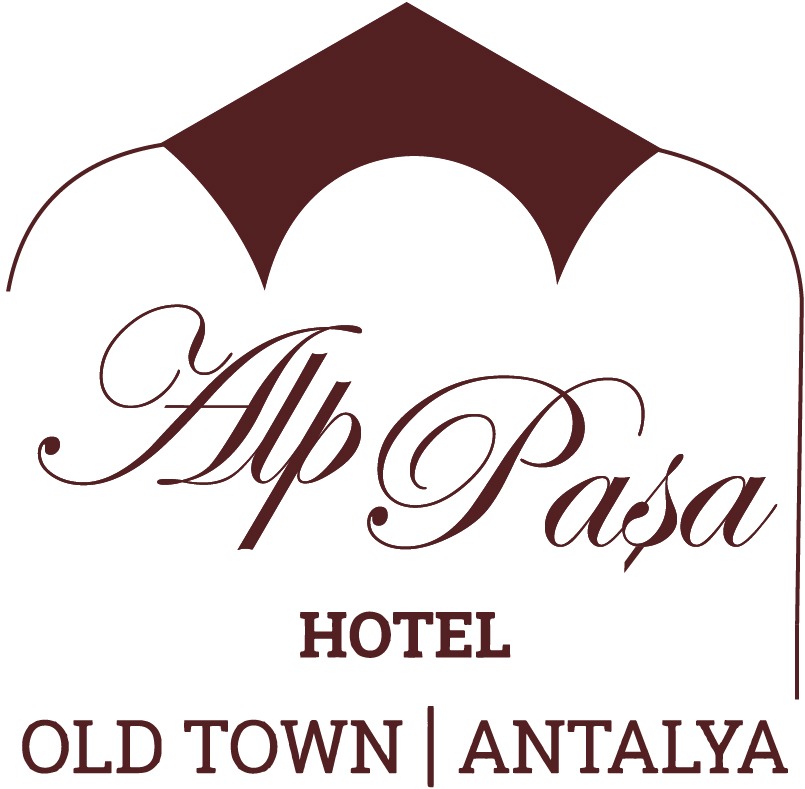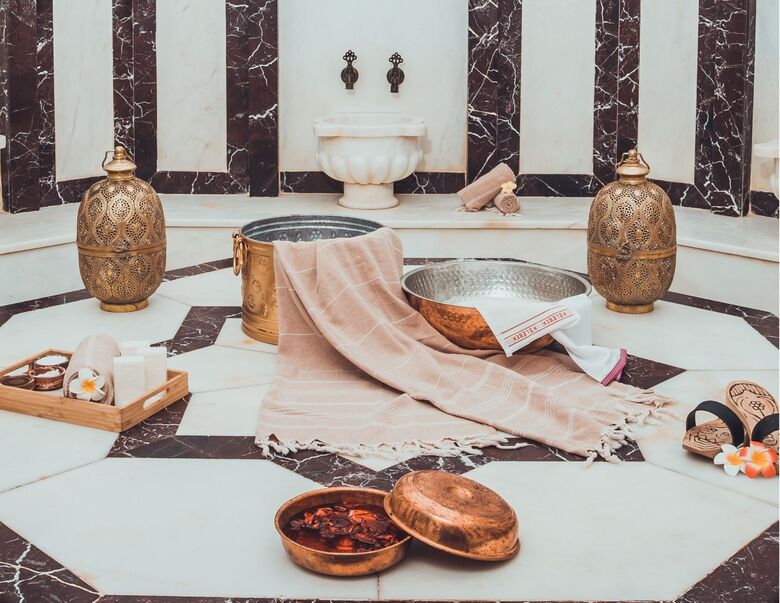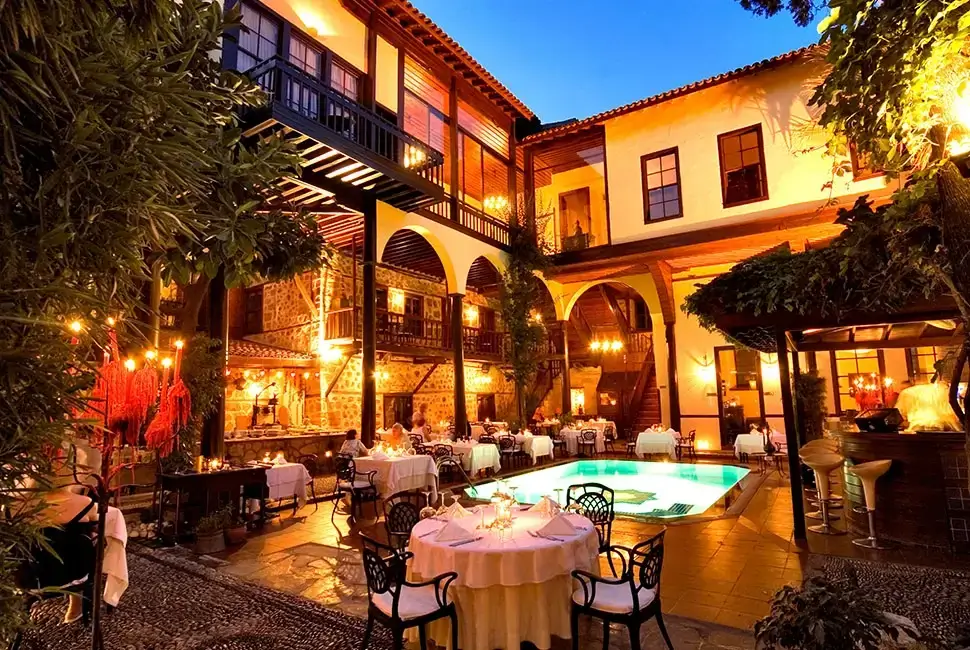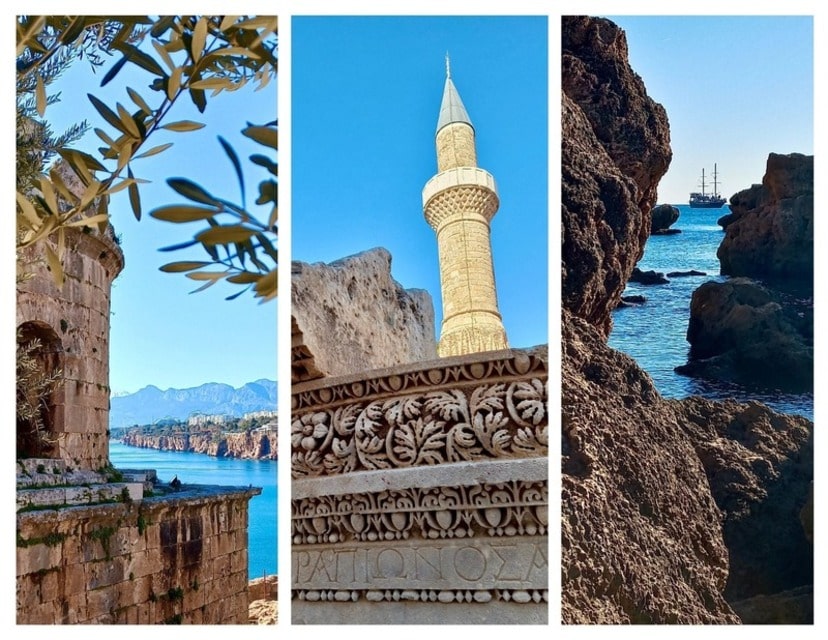Turkish Hamam: Ottoman cult of body and soul purity
A pure soul lives in a clean body. Bright intentions, kind thoughts, mundane desires. There is no space for hatred, anger and envy in the heart. Such a spirit is a snow-white sanctuary. It radiates light and happiness.
"Purity is a half of faith"
Hadis-i Şerif
This condition is impossible being uncleaned physically. It happens that a person feels sad and depressed. Once someone takes a shower, one perceives more satisfaction after that. The health is improving. Skin becomes better. Psychological state bounces back. Water is a wonderful gift to people. It was specially given to peel their bodies and make spirits healthy. This concept is the foundation of Islam. For the Ottoman Empire this has become a real philosophy of life. A mandatory ritual turned into a national tradition.
The best hotel in Kaleici Alp Pasa invites you to plunge headlong into the bathing culture of Ottomans!
Gift to World Culture!
This word has a meaning in Turkish as "to be hot", "heated area". These structures in the Ottoman Empire were as important as mosques. A place where everyone was equal. There was a lot of life there. This location deserved such attention many centuries ago.
World Famous Turkish Bath!
There was a habit of regular washing due to the hot climate before. In Byzantium and Ancient Rome there were “terma” terms. The Eastern bathhouse developed actively in the VII century. Only cold water was used first. People thought that immersion in any container with water is "bathing in your own mud.” Hamam began to drown gradually. Steam appeared.
The first known Ottoman mosque in Bursa was built by Sultan Murad I on the site of the Byzantine thermal baths. It consisted of a hall, a tepidarium (fresh chamber) and a hot room. This model was the basis for hamams. It was used until the 18th century. Fatih Sultan Mehmet built 19 civic hamams, Rustem Pasa — 32, and the famous Muslim architect Mimar Sinan left about 20 community and private baths. There were 168 large steam rooms in Istanbul alone by the 17th century. They were an inseparable part of the architectural ensemble of the mosque - madrasah - hamam - market. From 20 to 30 sweating rooms at different periods functioned on the territory of the Topkapi Palace.
Are you impressed by the scale?
Let's look inside.
Language of Hamam
The layout has an extensive central foyer. From it peculiar rays depart — small steam chambers with various air temperatures. These are "jamegah" (a point for changing), "soukluk" (a zone for drying) and "syjaklyk" (main area where washing actually was. )
💧 Pass to jamegah, for changing and donning a Pastemal (a wide silk or cotton towel). In Ottoman times people put on Nalin - wooden flip flops, designed for walking on a slippery floor. It was necessary also for hygiene.
💧 Preparing the flesh for serious procedures, rest for a few minutes in the dressing room. Pour then several buckets of water. Basin from silver or copper was used before for this.
💧 Take the way to hararet. There the skin under the steam is cleaned of dirt and toxins as much as possible.
💧 Wash off all the negatives. Equalize the temperature regime and go to sogukluk, lie down the stone "Chebek-Tasi". The bath attendant at this moment is making a massage with a special exfoliating washcloth Kese. They perfectly remove keratinized cells and immediately have a toning effect. The mittens are woolen and clean very deeply.
💧 Return the pedestal after washing again in warm water. Get under the "mountain" of foam from useful oils of olive soap. This is followed by a more intense aroma massage.
💧 The ceremony ends in a special lounge with tea and rest. In the Ottoman Empire, the favorite drink in the hamam was sherbet.
The process of ablution is a whole ritual. It was often held on Thursdays - on the eve of Friday prayers. The body and mind were exempted from the burden. Calmness and peace settled down. Several hours were devoted to this process. Men and women could spend the whole day in the hamam, not only bathing. Destinies were decided there.
Hamam - the center of society
Attending a bath during the Ottoman Empire was not only a method to purify oneself, but also to participate in public communication. It happened mostly when it came to women. The male in their separate sections were talking or solving work issues. The female could get to know each other in this way. Children also accompanied their mothers. Women in addition could cunningly observe young girls who had reached marriageable age. They compare and consider them as suitable partners for their sons. There they learned the news, shared gossip.
The Turkish bath was a location where all important dates were celebrated. The appearance of the baby's first tooth. There was also a lunch about the fulfillment of some desire. Hamam was removed on these occasions, music was organized, desserts, and also invited relatives to join. Here was the custom of pre-wedding bathing of the bride and of the groom. These events were distinguished by pomp, an abundance of treats, sweets, sherbet, and gifts.
The hamam was firmly entrenched in the everyday life of the Ottomans. Religiousness and idleness intertwined there filigree. It was moral therapy. Everything bad was washed away. Every cell was released from heavy energy. The head was freed from evil thinking. People were born again after lustration. They were full of a sense of spirituality and joy. They continued their way from a clean slate.
The impressions of your stay at Alp Pasa Hotel in Antalya will complement the unforgettable emotions of acquaintance with the bath traditions of the Ottoman Empire!






